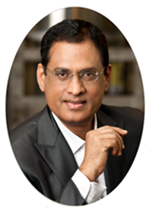










|
Title of Talk Solid-State Polymerization via [2+2] Cycloaddition Reactions in Metal Complexes, CPs and MOFs
Abstract Solid state [2+2] cycloaddition reaction is the most popular one in solid state chemistry and crystal engineering. Bringing a pair of olefin groups closely in parallel has been accomplished in various organic crystals, coordination polymers (CPs) and MOFs. On the contrary, single crystals of organic polymers or the metal complexes of organic polymeric ligands are not known since they are difficult to crystallize by traditional methods. In this talk, we will discuss how to design photoreactive metal complexes to accomplish metal-complex polymerization. Further we will present our strategies to make monocrystalline metal complexes of organo-polymeric ligands made in situ by [2+2] cycloaddition reaction in CPs and MOFs. We have also accomplished ring opening of the cyclobutane rings in single-crystal to single-crystal manner in a few cases. One can potentially extend our synthetic strategy to make a range of new metal organo-polymeric framework (MOPF) materials by employing photopolymerization reactions. Such highly mono-crystalline metal complexes of organic polymers were hitherto inaccessible for materials researchers. We strongly feel that this is the first step toward making metal complexes of COFs and true MOF-COF hybrid materials in the near future.
References: 1. G.K. Kole and J.J. Vittal, Chem. Soc. Rev. 42 (2013) 1755 2. W.L. Leong and J.J. Vittal, Chem. Rev. 111 (2011) 688 3. G. K. Kole, A.M.P. Peedikakkal, B.M.F. Toh and J.J. Vittal, Chem. A Eur. J. 19(12) (2013) 3962 |
|
Jagadese J. Vittal, Professor
Department of Chemistry, National University of Singapore, 117543, SINGAPORE e-mail: chmjjv@nus.edu.sg
Selected Publications 1. M. Nagarathinam, K.Saravanan, J.H. Phua, M. V. Reddy, B. V. R. Chowdari and J. J. Vittal, Angew. Chem. Int. Ed. 51 (2012) 5866 2. R. Medishetty, L.L. Koh, G.K. Kole and J. J. Vittal, Angew. Chem. Int. Ed., 50 (2011) 10949 3. K. Saravanan, P. Balaya, M.V. Reddy, B.V.R. Chowdari and J.J. Vittal, Energy & Enviorn. Sci. 3 (2010) 457 4. M.H. Mir, L.L. Koh, G.K. Tan and J. J. Vittal, Angew. Chem. Int. Ed., 49,(2010) 390 5. S.K. Batabyal, L. Tian, N. Venkataram, W. Ji and J.J. Vittal, J. Phys. Chem. C 113 (2009) 15037 |

